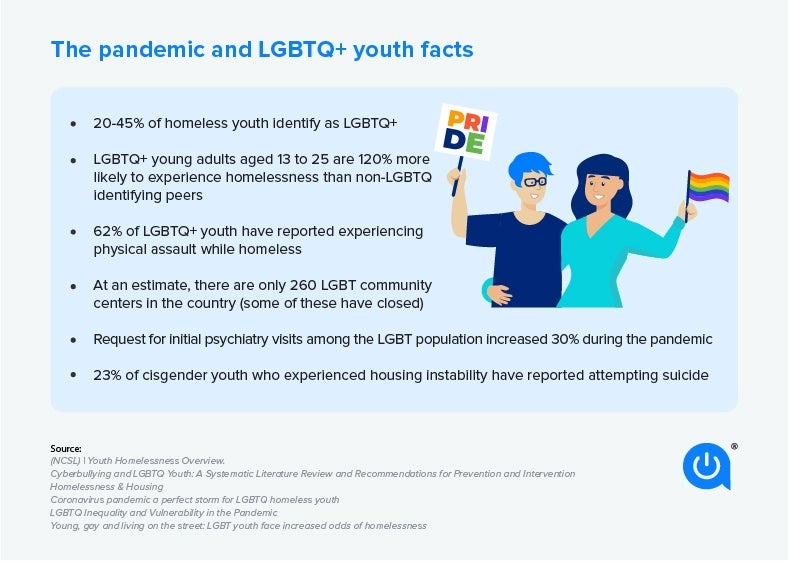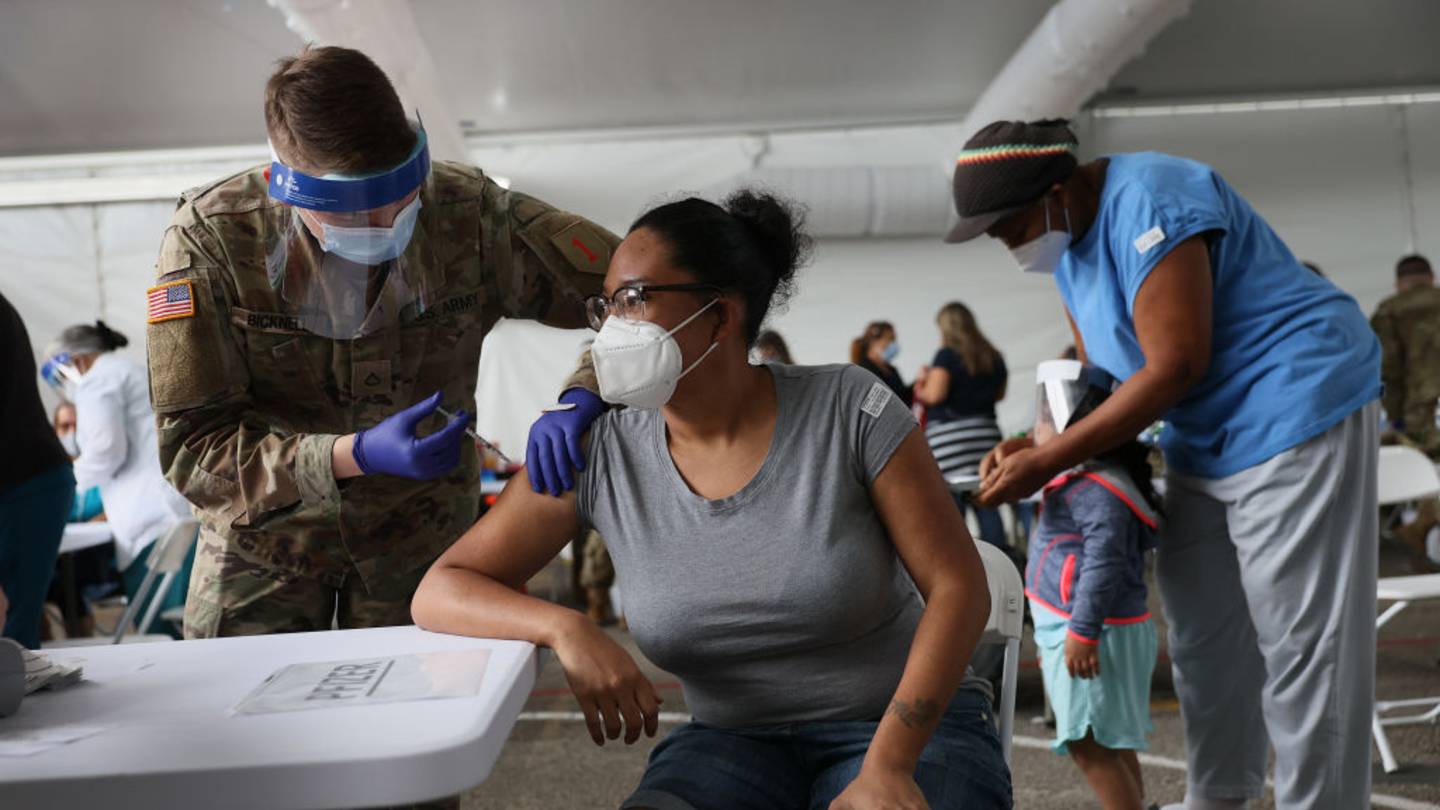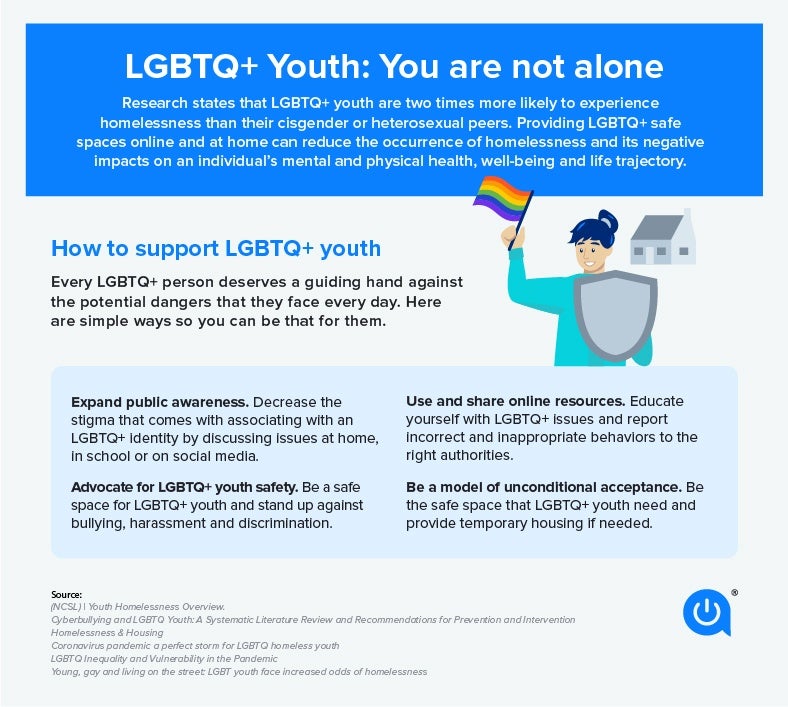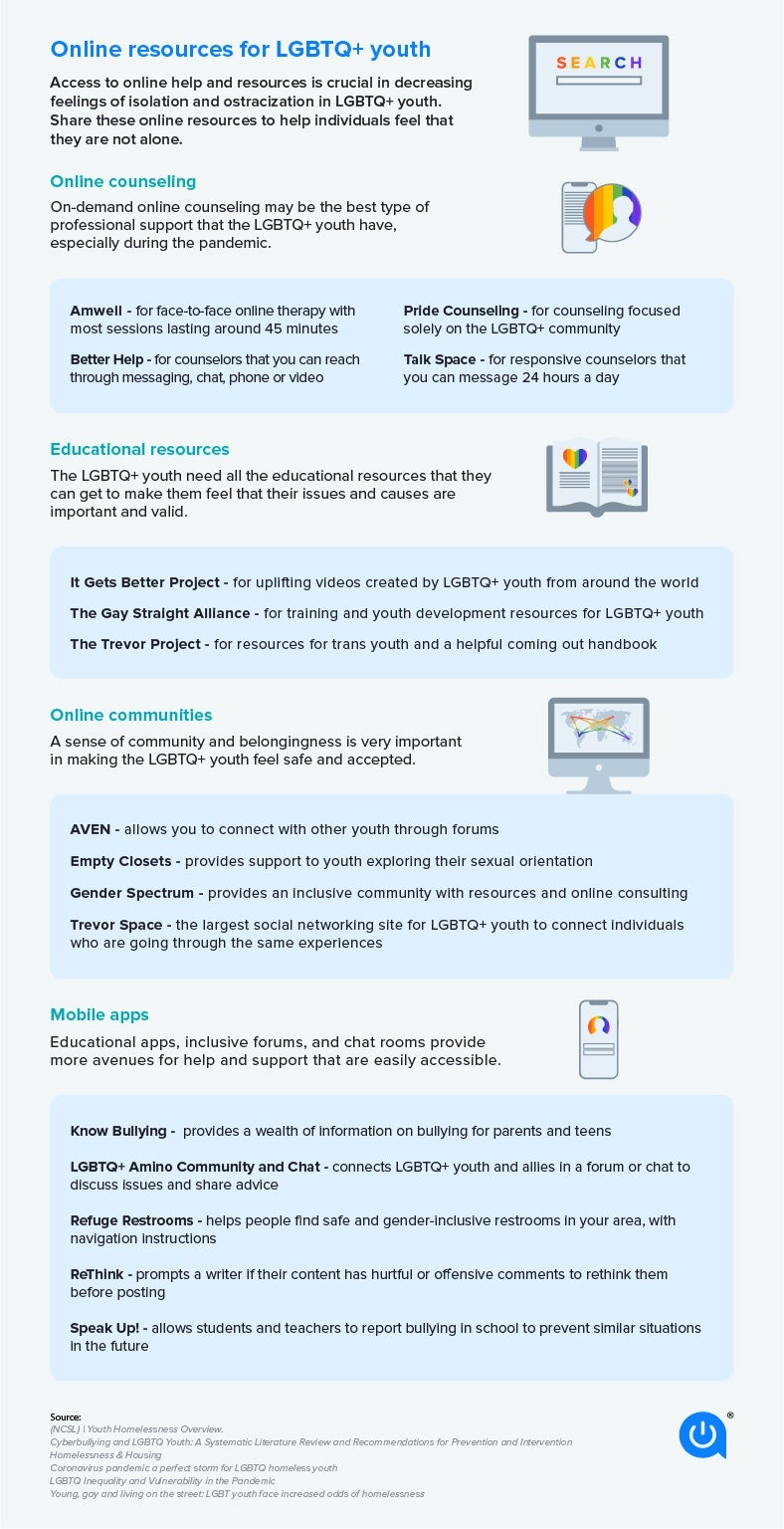The images in this video were produced by Wings of Hope, which is part of Bainbridge Island Rotary (don’t forget to purchase goods at their Online Auction & Rummage Sale – June 24-26). Since March, they have delivered 50-60 cards per week to the BI Museum of Art which has amounted to over 1,000 so far. They are given away and traded, not sold. It’s a collaborative effort by their group:
March DiCarolis
Ginny Kaul
Erika Borg
Lisa Erickson
Winifred Perkins
Rosie Hollinger
and Carol Reitz
You can email them: (wings@bainbridgeislandrotary.org) or visit their website.
“Job hunting has always been a major challenge for non-conforming gender students. LGBTQ community has gone a long way to making the working environment safe and friendly for its members, turning 3% of Fortune 500 companies into the ones which accept non-discrimination policies and provide benefits for gay employees. Still, almost 20% of LGBTQ students face discrimination on the basis of their sexual orientation or gender identity when looking for a job. It means that the community members have to be aware of their rights, know how to protect themselves against discrimination at the workplace, and ensure that the company they enter will give them a favorable ground for self-development.
Title VII of the Civil Rights Act 1964 states that any kind of discrimination on the basis of race, color, religion, gender, pregnancy, or national origin is prohibited in the workplace. Though this act came into force in the middle of the previous century its implementation as regards LGBTQ members was questionable. Thus, in July 2020 the Supreme Court decided that the provisions of the Civil Rights Act shall cover the rights and freedoms of LGBTQ employees.
While some people are sure that the ruling is a major step towards an inclusive society, experts say that this step hasn’t made the workplace equal for all. There are some legal gaps, such as unclarity about the state of LGBTQ workers in small businesses with less than 15 employees, the issue of washing closets for transgender people, and medical benefits gaps that have to be filled as soon as possible.
Despite the fact that more and more companies claim to become inclusive, still there is a great number of obsolete-minded organizations. So to settle down in a place where gay employees will be cherished for who they are, it’s essential to keep in mind a couple of tips to make job search effective.
Tailoring your CV before applying for a job is something basic. But if you have been involved in activities for LGBTQ organizations you may be in two minds if it should be added to the resume. And the answer is “yes” for sure. Even if you are not thinking of coming out, mentioning such experience will show that you have a diverse skillset which is an asset for any employer.
Being gay, lesbian, or transgender doesn’t mean you have to be a backbencher. You have a lot to share and bring to a place you work in, inspire others, and show your employer that you possess unique knowledge, creative ideas, and the courage to share them. Even in an LGBTQ-friendy environment people sometimes tend to play the second violin because of their inner identity-related obstacles. Forget them and be who you want to be.
Being around people who can give you support and who are on the same wave is a huge booster for work productivity and a favorable mental state. However even if you’re the only LGBTQ member at your workplace, you can still find people who are understanding, progressive, and free of identity preconceptions.
The last and most obvious tip is to do a brief research on all-gender inclusive companies in your state or country. Knowing that your employer respects the rights of LGBTQ and provides certain benefits for one’s workers will definitely ease the tensions both before and after getting hired. The quality of the working environment is 50% of the work outcome, so applying for an LGBTQ-friendly job is already half of your success. Here are a couple of LGBTQ-open workplace resources to consider:
ProGay Jobs is more than just a major board of jobs for gay people. The website also displays information about the companies which provide benefits for LGBTQ members, gives tips on how to enhance your resume, and ways to support the LGBTQ community.
Apart from the LGBTQ-friendly job search option, Out Professionals offers an array of events where you can meet other gay and transgender people, share your work experience, and encourage others on their way.
Pink Jobs has hundreds of positions for non-conforming gender students. It also runs a blog with curious articles both for workers and employers on how to create a truly inclusive and friendly environment for all.
Another comprehensive website aimed at enhancing LGBTQ community members’ wellbeing at the workplace and promoting events, training, and meetings to address the issues gay and transgender people face at work.
What does it mean to build an inclusive workspace? It’s not about silent acceptance of non-conforming gender employees, it’s much more. Being inclusive means being supportive, promoting equality in every dimension, providing health care benefits, and being ready to stand for your choice. Check out the best companies which have successfully coped with the above-mentioned.

Intuit is considered to be a leading company that has been contributing to the LGBTQ community for more than 10 years now. The company culture has the Pride network at its core, fights for the Domestic Partnership Benefits, promotes Safe Space Workplace initiative, organizes fundraising events to contribute to the community.
During the last 5 years, this company has proved its commitment to the ideas of inclusiveness, equality, and integrity by getting 100/100 rating points in the Human Rights Campaign Corporate Equality Index.
CIA established an Agency Network for Gay, Lesbian, Bisexual, and Transgender Officers and Allies known as ANGLE. It promotes the rights of the community members and each year creates a research topic on how LGBTQ members positively change the workplace.
Google is also a flagship of inclusiveness and LGBT support. It partners up with the community in its advertising campaigns, promotes the ideas and values of non-conforming gender employees on the daily basis.
Uber has established the UberPride community which is targeted at turning the company’s environment into one where everyone is welcome, regardless of race, religion, gender, or identity. The company has positioned itself as a perfect workplace, getting 100 points in CEI for a couple of years in a row.
Showing your inner self to the world is not an easy task. Working with people of various backgrounds, you can’t be sure about their reactions and attitudes. The only thing you can be sure about is that coming out will help you take off the mask and start living on your terms. Though coming out is often thought to be a single-time act, once done, it will have to be done every time. So is it worth it? Let’s see the pros and cons.
Being Yourself
Nothing feels better than not being afraid to be yourself. Hiding behind a mask every day, putting constraints on your actions, ideas and words is a major stress that may lead to even greater mental consequences. Coming out might be uncomfortable, but overcoming those first minutes, you unleash yourself till the end of your life.
Educating Others
Coming out shows that you’re not afraid of telling people the truth you’re comfortable with. Courage attracts and makes others respect you and your choice. People who are out of the community can learn about it only from its members, so be the ambassador.
Paving the Way
You know that coming out in an unprepared workplace is awkward and uncomfortable. Disclosing yourself and educating your colleagues about the LGBTQ, its needs and issues will make coming out easier to the next LGBTQ person in your company.
Discrimination
Although any kind of discrimination is against the law, it still can’t be eliminated. Even if not shown in public, you may encounter silent discrimination and feel awkward which is not the best feeling contributing to productive work and stable mental wellbeing.
Workplace Change
Discrimination may give you an impetus to go for another company. And if to look at it from the bright side, changing a job where you are unwanted can hardly be considered as a con. Still, life situations differ greatly, so if you feel that it’s not the time yet, better take your time and work out a plan B. But if you’re not strictly limited in choice, check out the list of LGBTQ-friendly jobs and enjoy the place you work for.
Creating a strong, accepting and warm-hearted corporate culture requires dedication, education, and will. To avoid professionals leaving your company because of feeling discriminated against, you should apply various means ranging from education to providing household benefits to LGBTQ employees. If you don’t know where to start, start here.
Discrimination is neither normal nor lawful. If you feel that your rights at work are violated on the basis of gender identity, visit one of the resources below to seek professional aid.
American Civil Liberties Union LGBT Project is an organization that provides all necessary professional means to eliminate gender discrimination all over the US.
CenterLink is literally a link between the LGBTQ organizations to support their members both mentally and legally.
The Gay, Lesbian, Bisexual and Transgender (GLBT) National Help Center is a resource for supporting and informing the community members about their rights at work.
The Legal Aid Society–Employment Law Center’s Gender Equity & LGBT Rights Program covers the interests of all the non-conforming gender people regarding work and household issues.
Out & Equal Workplace Advocates is an organization dedicated to aiding people who are discriminated against at the workplace on the basis of gender.
When it comes to looking for a job being an LGBTQ member, there can never be too many resources, so here are some more for you to consider.
Starting a career is a challenge whether you’re part of the community or not. The growing number of LGBTQ-friendly organizations gives hope that in a couple of years no special guides and resources will be needed to help non-conforming gender students get hired and unleash their potential without any side thoughts. Today we can’t talk about far and wide inclusiveness but we’re on the way.”
– https://edubirdie.com/blog/lgbtq-employment-guide

At Allconnect, we work to present quality information with editorial integrity. While this post may contain offers from our partners, our opinions are our own. Here’s how we make money.
Challenges facing LGBTQ+ youth
Online resources for LGBTQ+ youth
Ways parents and loved ones can help
Other resource and advocacy groups
As Americans struggle in the second year of a pandemic, existing — and mostly ignored — inequalities are now in a glaring spotlight.
Being an LGBTQIA young person unfortunately means that during their critical adolescent years, they can often feel isolated and misunderstood, lacking the resources they need to maintain their mental health.
With pandemic-related measures in place across the country, youth are at an even greater risk of social isolation and depression. But online resources, including supportive and educational materials, can help them maintain mental and emotional health.
In a Catch-22, the internet can make this necessary information accessible, but only if you have access to the internet.
In this guide, Allconnect researchers take a look at available online resources, as well as address the digital divide and homeless issues within the LGBTQ+ youth community.

WHO DOESN’T LIKE FREE STUFF?
Might as well take our free speed test while you’re on AllconnectTake the test
LGBTQ+ youth can face some unique challenges, such as higher rates of depression and suicide than their peers. A behavioral health report on youth.gov noted that suicide is the third leading cause of death among youth and young adults, and up to 33% of LGBTQ+ youth report having attempted suicide. LGBTQ+ high school students are also two to seven times more likely to commit suicide than their peers.
Along with all the pressures of growing into their own identities, they have increased risks of alcohol and drug use, bullying, peer pressure, depression, suicide attempts and high-risk sexual activities. LGBTQ+ youth and young adults may be kicked out of their homes, and often face homelessness.
Identifying as LGBTQ+ doesn’t cause depression or mental health issues. The cause is rooted within outside factors: Discrimination, family rejection, negative biases and bullying and hostile microaggressions that can lead to suicidal ideation, according to the report. When LGBTQ+ youth aren’t accepted for who they are, they have higher rates of stress, anxiety, depression, self-harm behaviors and other disturbances to mental health.
In addition, many LGBTQ+ youth are confronted with online bullying. Pre-pandemic, 32% of teens aged 14-17 spent about four hours in front of screens. As of June 2020, that number leaped to 62%, according to a Statista report.
Cyberbullying has made the internet a dangerous place for LGBTQ+ youth, and approximately 48.7% of LGBTQ+ students are victims of cyberbullying each year. This can be through private text messages or public posts on social media. Cyberbullying leads to high rates of psychological and emotional distress for LGBTQ+ youth, as well as low self-esteem, social isolation, depression and thoughts of suicide.
Resources are only as useful as the connection you have to them. Unfortunately, there is a gaping digital divide in America, with over 40 million people lacking access to the internet, and nearly 160 million lacking high-speed access. This gap affects low-income families, the homeless population and other marginalized communities, including LGBTQ+ youth.
According to an LGBT Tech impact report, 2.9 to 3.8 million LGBTQ+ people live in rural areas with little access to LGBTQ+ resources outside of the internet.
In “An LGBT Broadband Future” report, key findings included:
The internet has become a place for everyone to stay connected to family, friends, work and more, but without that online connection, young people can be affected in many ways:

April 23, 2021AT&T invests $2B to solve digital divide | Allconnect.com
April 1, 2021How the lack of broadband access has impeded the COVID-19 vaccine rollout

Organizations like LGBT Tech are advocates of providing technology and broadband services to this underserved community and “empowers LGBTQ+ communities and individuals, and ensures that media, telecom and high technology issues of specific concern to LGBTQ+ communities are addressed in public policy conversations.”
PowerOn, a program of LGBT Tech, shares its mission as a program “that distributes technology to homeless, isolated, and disadvantaged LGBTQ+ individuals across the country.” Their PowerOn Partner Centers provide places where people can connect online and reach necessary resources.
In a petition to the Federal Communications Commission on the Emergency Broadband Benefit program, LGBT Tech stated, “The issues of connectivity and access are even more critical for LGBTQ+ people of color in rural areas who are often at risk of multiple types of discrimination, further limiting their chances to access quality services, health care, and employment. Further amplifying this problem, many service providers in rural areas are religiously affiliated and are covered under religious exemption laws that may allow them to discriminate. For these LGBTQ+ individuals, broadband connectivity may be the only way to access medical, mental health or employment opportunities not available in their local communities due to discrimination.”
Home is where we often head if we need a safe place to just “be” us. Unfortunately, many LGBTQ+ youth find that after sharing their preferences with family, their home is no longer that safe refuge.
In fact, LGBTQ+ youth have a 120% higher risk than their peers of becoming homeless, according to the Chapin Hall, Voice of Youth Count report.
The Trevor Project reports LGBTQ+ youth represent 40% of the homeless youth population. The report finds that homelessness among LGBTQ+ youth can result from “family rejection, discrimination, criminalization and a host of other factors.” The organization also found that LGBTQ youth who report having at least one accepting adult were 40% less likely to report a suicide attempt in the past year.
The resources listed below are a good starting point if you know of, or are, a youth in need.

LGBTQ+ youth may have a hard time accessing in-person counseling, but online counseling provides flexible support. Whether on the phone, in a chat or via texting, online counseling can be convenient and inexpensive.
It’s important for LGBTQ+ youth to understand that they’re not alone. Educational resources can provide more information on discrimination and bullying, how to effectively deal with this harassment and where to find help.
Connecting with a community helps LGBTQ+ young adults feel a sense of belonging. Communities provide additional resources, encourage youth to share their stories and have platforms where youth make friends with people who can understand their journey.
Download this clickable list of U.S. LGBTQ+ youth community centers.
Cyberbullying is a major issue for LGBTQ+ youth online. Be aware of the risks when using social media, and learn what to do if you are bullied online. Follow these cyberbullying safety tips to stay safe when you’re online.
As a parent, you can support your teenager and help them maintain their mental health. These are four ways you can help your teenager, and you can easily find supplemental resources on the internet that provide information to families of LGBTQ+ youth.